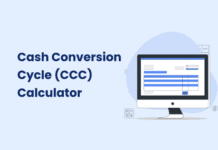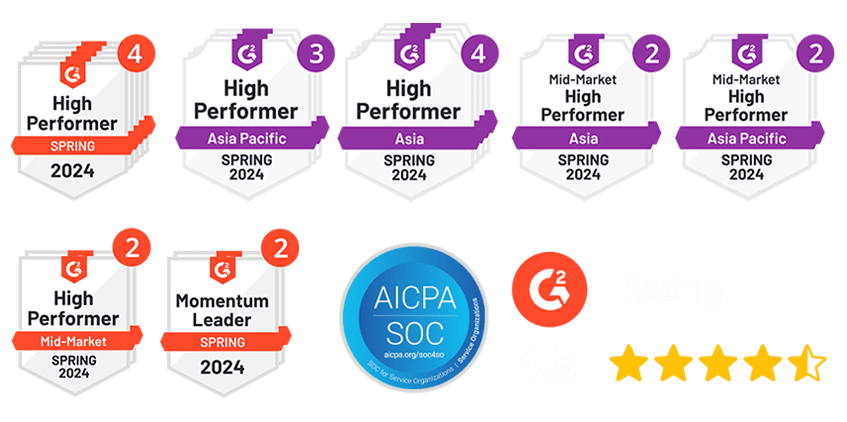International transactions come with many challenges. High fees, slow transfers, and hidden costs can hurt your cash flow. Many businesses struggle with unpredictable delays and expensive currency conversions. Payment errors can also damage trust with suppliers and customers.
Global trade relies on smooth and secure payment methods. When payments are delayed, relationships suffer. Businesses face pressure to reduce costs while maintaining speed and security.
This blog breaks down international payment methods, their types, the pros, cons, and differences of each option. Learn how to choose the best method to save time and money on global transactions. Stay tuned to improve your payment process and support your business growth.
What Are International Payment Methods?
International payment methods let you send money across borders. They help businesses pay vendors or receive funds from customers abroad. These methods use banks, online platforms, or even digital currencies to transfer funds.
For example, a U.S. business may pay a supplier in Germany using a bank wire transfer. The money moves from one bank to another in different countries. This method ensures the funds reach the supplier despite currency differences.
These payment systems are key for global trade. They help manage costs, speed up transfers, and reduce errors. Understanding them is the first step toward smoother transactions.
Types of International Payment Methods
International transactions can be frustrating. Businesses often face high fees, delays, and unpredictable currency conversion costs. Managing different methods can add stress and risk. Understanding these options helps you choose a smoother, more cost-effective approach.
1. Bank Wire Transfers
Bank wire transfers move funds directly from one bank to another. They are reliable and secure.
Example: A U.S. company paying a supplier in France might use a bank wire transfer. The process handles currency conversion and provides a clear record of the transaction.
2. Credit/Debit Card Payments
Credit and debit card payments are fast. They work well for smaller amounts and online purchases. However, extra fees and exchange costs can occur.
Example: A U.S. online store selling goods to a customer in Europe may use a credit card payment to complete the sale quickly.
3. Online Payment Platforms
Online payment platforms like PayPal or Wise offer quick and cost-effective transfers. They let you send and receive money in different currencies with lower fees.
Example: A small business in Canada might use an online platform to pay a supplier in India within hours. This method is popular because it is easy to use and saves time.
4. Cryptocurrency Payments
Cryptocurrency payments use digital currencies for near-instant transfers. They come with low fees. However, cryptocurrency values can change rapidly.
Example: A company might use digital currencies for smaller transactions when speed and low cost are important while keeping an eye on market changes.
5. Traditional Checks or Demand Drafts
Traditional checks or demand drafts involve sending paper payments. They are slower and less secure. This method is less common today because of the risk of fraud and long processing times.
6. Letters of Credit
Letters of credit are used for high-value deals. They guarantee payment once conditions are met.
Example: A U.S. buyer and an Asian supplier might use a letter of credit for a large shipment. This method builds trust by ensuring that funds are released only when all terms are satisfied.
Each type of international payment method has its own advantages and drawbacks. Knowing these details helps you choose the best option for your business needs.
We’ve looked at various international payment methods. Now, let’s check out the factors you need to consider before choosing a payment method.
Factors to Consider When Choosing a Payment Method
When choosing the right international payment method, several key factors come into play. These factors help you select a method that meets your business needs and minimizes risks. Here are the main points to consider:
1. Speed of Transfer
Quick transfers help maintain a steady cash flow. Faster international payment methods reduce delays in receiving funds and paying suppliers.
2. Cost and Fees
Different methods charge varying fees. Look at transaction costs, currency conversion fees, and any hidden charges to keep expenses low.
3. Security and Compliance
Strong security measures protect your funds and sensitive data. Ensure the method meets global standards and regulatory requirements to reduce fraud risks.
4. Currency Conversion
Favorable exchange rates can save money. Consider how the payment method handles currency conversion and whether it offers competitive rates.
5. Ease of Use
A simple, user-friendly system saves time and reduces errors. Choose a method that integrates with your existing accounting tools and is easy for your team and customers to use.
6. Transaction Size
Some methods suit smaller amounts, while others are better for large sums. Match the payment method with your typical transaction size for efficiency.
By evaluating these factors, you can understand which international payment method will work for your business. But you also need to know the pros and cons to see which best fits all your business needs.
Pros and Cons of International Payment Methods
International payment methods come with benefits and challenges. They affect speed, cost, and security. Understanding these pros and cons helps you pick the best method for your global transactions. Businesses often face issues like high fees, slow processing, and unpredictable exchange rates. Knowing these details can improve your decision-making and boost efficiency.
Below is a comparison table that outlines the pros and cons of common international payment methods:
| Payment Method | Pros | Cons |
| Bank Wire Transfers | Secure, widely accepted, clear records | Slow, high fees, extra currency conversion costs |
| Credit/Debit Card Payments | Fast, convenient, ideal for smaller amounts | High transaction fees, exchange rate charges |
| Online Payment Platforms | Quick, cost-effective, easy to use | It may not suit large transactions, limited options |
| Cryptocurrency Payments | Fast transfers, low fees | Volatile value, regulatory uncertainties |
| Traditional Checks/Demand Drafts | Provides a paper trail | Slow processing, higher risk of fraud |
| Letters of Credit | Secure for high-value deals, build trust | Complex process, heavy documentation required |
By comparing these factors, you can select the international payment method that best meets your business needs. Now that we’ve weighed the pros and cons of international payment methods, let’s learn how to choose the best one for your business needs.
How to Choose the Right Payment Method for Your Business
Businesses often face high fees and slow transfers with international payments. These challenges strain cash flow and complicate supplier relationships. Choosing the right method can lower costs and improve transaction speed. This guide helps you find the best solution for your needs.
1. Assess Your Business Needs
Evaluate your transaction volume and average payment size. Determine if you need quick transfers or can manage slower processes. This initial assessment helps narrow your options.
2. Compare Costs and Fees
Look at transaction fees, currency conversion costs, and hidden charges. A lower fee structure can lead to significant savings over time. Weigh these costs against your transaction size and frequency.
3. Prioritize Security
Ensure the payment method protects your funds and sensitive data. Check if it meets international security standards and local regulations. A secure method builds trust with your suppliers and customers.
4. Consider Ease of Integration
Choose a solution that works with your current accounting and invoicing tools. A system that integrates smoothly reduces manual work and the risk of errors.
5. Match Method to Transaction Size
Some methods work better for small, frequent payments, while others are suited for large transactions. Align the payment method with your typical transaction size for optimal efficiency.
By following these steps, you can choose an international payment method that meets your business needs and keeps your global transactions running smoothly. This careful selection leads to lower costs, faster processing, and a more secure payment system for your operations.
How Peakflo Can Help with International Payments
Managing international payments can be complex, with challenges like high transaction fees, fluctuating exchange rates, and compliance risks. Peakflo simplifies both outgoing and incoming cross-border payments, ensuring efficiency and cost savings for finance teams.
1. Paying International Vendors with Ease
- Multi-Currency Payments: Send payments in your vendor’s preferred currency while maintaining real-time visibility into FX rates.
- Automated Approvals: Set up multi-level approval workflows to ensure compliance before payments are processed.
- Preferred Payment Methods: Pay vendors via SWIFT, ACH, or local banking networks to avoid unnecessary fees.
- Scheduled & Bulk Payments: Automate recurring vendor payments and process multiple payments in one go.
2. Getting Paid from International Customers Faster
- Localized Payment Options: Offer customers payment methods that suit their region, reducing friction in collections.
- Automated Invoice Reminders: Send timely reminders in multiple languages to ensure on-time payments.
- Real-Time Payment Tracking: get a clear view of when funds arrive, which helps manage cash flow and address any delays quickly.
- Seamless reconciliation: Automatically match incoming payments with invoices, eliminating manual tracking.
3. Security & Compliance
Peakflo meets global security standards and follows international regulations. This protects sensitive financial data and lowers the risk of fraud. With robust security in place, you build trust with your vendors and customers.
Peakflo tackles the pain of international payments by automating invoicing and sending timely reminders. It offers real-time tracking and competitive currency rates to reduce delays and cut costs. With strong security and easy integration, managing global transactions becomes straightforward and efficient.
Conclusion
International payments often bring headaches like high fees, long delays, and unpredictable exchange rates can disrupt your cash flow and stress your team. Peakflo cuts through the clutter by automating invoicing and tracking payments as they happen. Its provides security mean you worry less about fraud. Plus, it fits right into your existing systems, so you can keep your workflow simple. Ready to say goodbye to payment hassles and hello to smoother transactions? Try Peakflo today and take control of your international payments.









![Why AI Sales Calls Are Making Good Sales Reps Even Better [2025 Guide] ai sales calls](https://cdn-kmjmp.nitrocdn.com/YvtqmrsiHUxqerlSiZgbfzqqTARWTElr/assets/images/optimized/rev-834053b/blog.peakflo.co/wp-content/uploads/2025/09/65168cf6-3001-4733-8cbc-12d5684cf449-218x150.webp)

































